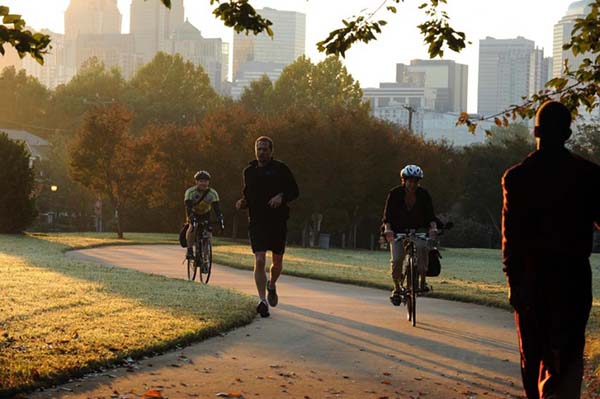High court rail-trails decision won’t affect N.C.

A recent Supreme Court decision has some trail advocates worried about the fate of the national rails-to-trails program, but the ruling is unlikely to affect North Carolina. The case, Brandt Revocable Trust v. United States, has to do with who retains the property rights to abandoned railroad right of ways.
The national Rails-to-Trails Conservancy and its state and local branches have converted 21,768 miles of abandoned railroad lines into recreation trails since the mid-1960s. The organizations benefited from an 1875 law that reverted ownership of railroad rights of way on former federal land to the U.S. government. The suit, brought by a landowner in Wyoming and supported by the Cato Institute and Pacific Legal Foundation, argued that the rights of way should revert to adjacent property owners. The court agreed in an 8-1 ruling, with Justice Sonya Sotomayor the dissenting vote.
The ruling will have a greater impact on states west of the Mississippi, says Carrie Banks, executive director of North Carolina Rail-Trails. That’s because the law granting rights of way to the federal government never applied in North Carolina. When railroad companies abandon their lines in North Carolina, the adjacent property owners gain rights to the land. Trail advocates in North Carolina typically negotiate with each property owner along the line.
“That’s why we have a lot of short trails,” Banks says. “It takes a lot of trust building. And it only takes one or two vocal, opposed owners to hurt a project’s chances.”
North Carolina Rail-Trails has helped convert 90 miles of abandoned railroads into 24 trails. In Charlotte, this includes portions of the Irwin-Stewart Creek Greenway and the Charlotte Rail-With-Trail following the Lynx Blue line from uptown to the New Bern station. The organization plans to extend the trail through a partnership with Charlotte, Mecklenburg County and Charlotte City Center Partners. Another 11 projects totaling 113 miles are planned for the state. By contrast, Washington State has 1,051 miles of rail trails, including the 253-mile John Wayne Pioneer Trail, the longest in the country. Minnesota, Michigan and Wisconsin each have more than 2,000 miles of rail trails.
More recently, rail trail advocates throughout the country have used a process called “rail banking” to secure the abandoned rights of way. Rail banking allows nonprofits or state and local governments an easement on the abandoned rail lines if they apply within a few months after the railroad company abandons the line. The N.C. state government rail-banked the land used for the recently opened 22-mile American Tobacco Trail in the Durham area.
“We don’t ever want to take an active rail line and turn it into a trail,” Banks says. “We always want to see the rail line active. But if it’s not being used, why not use it for a trail?”